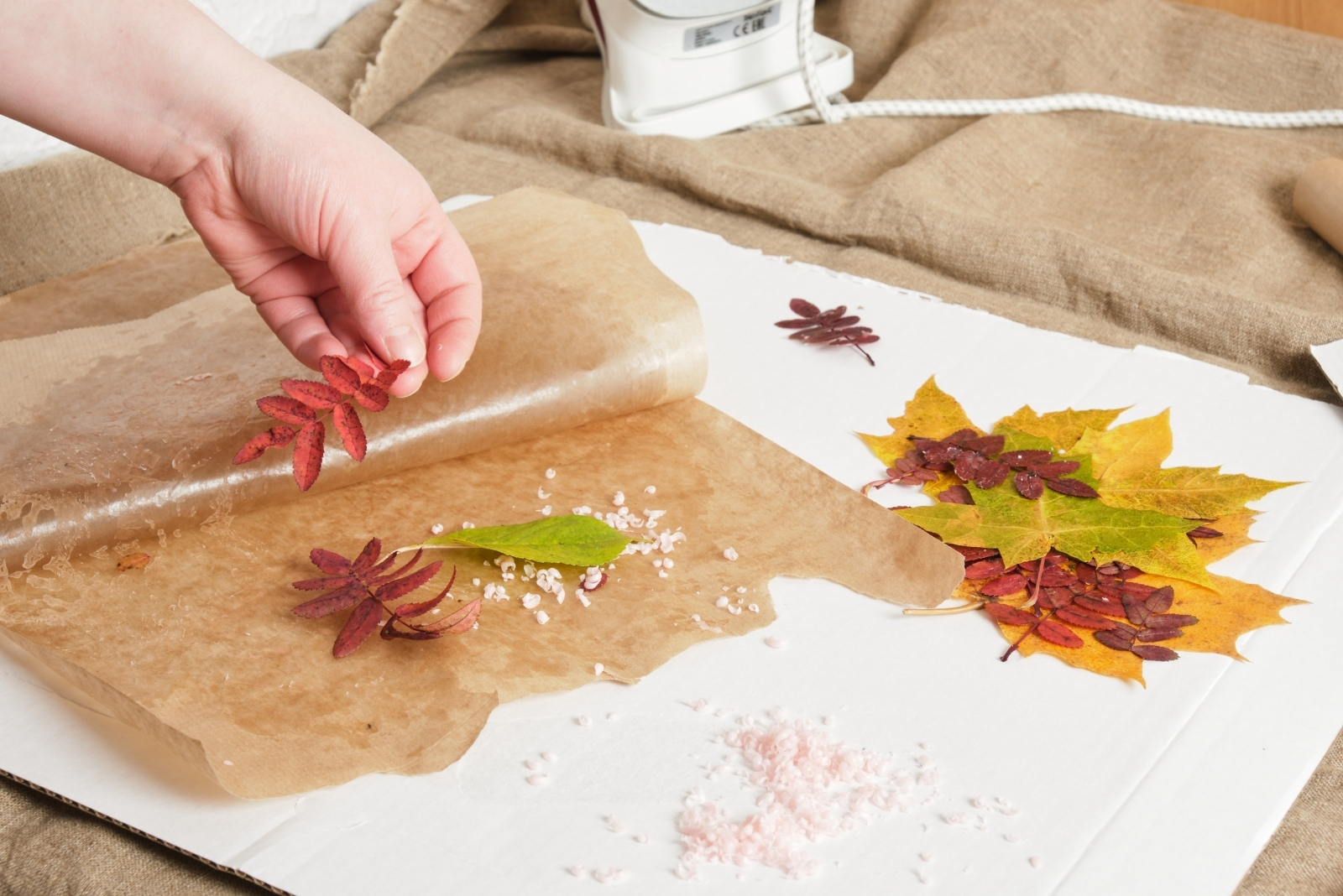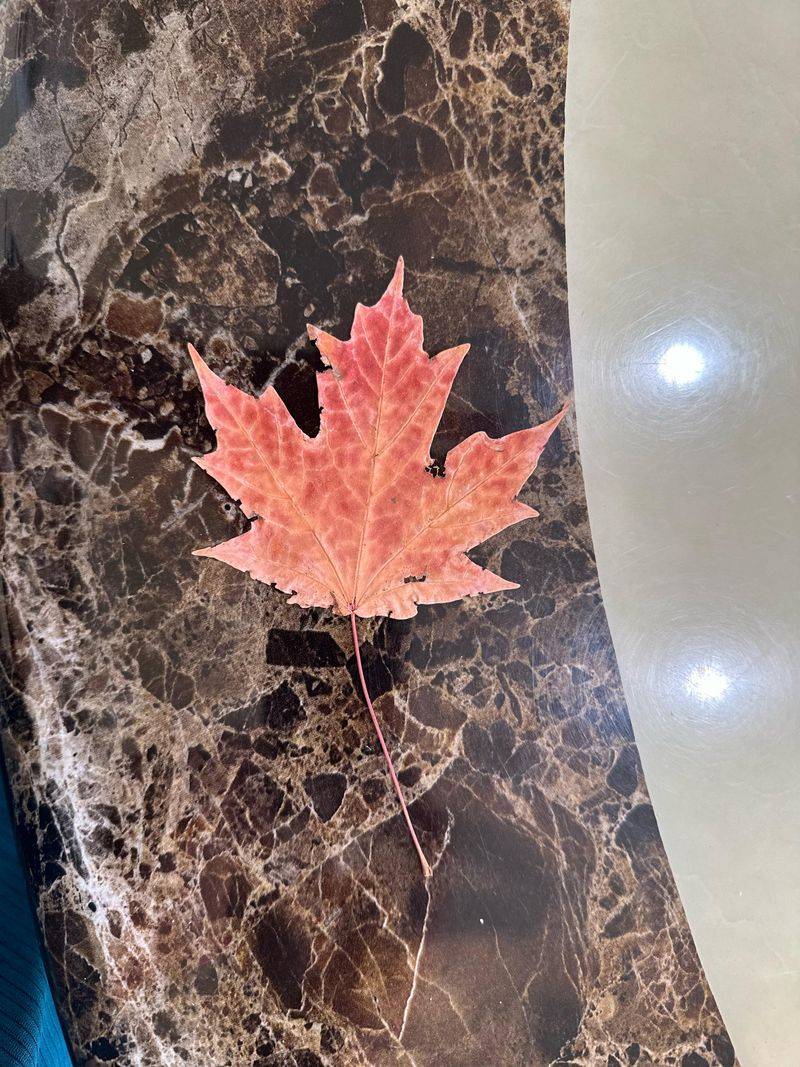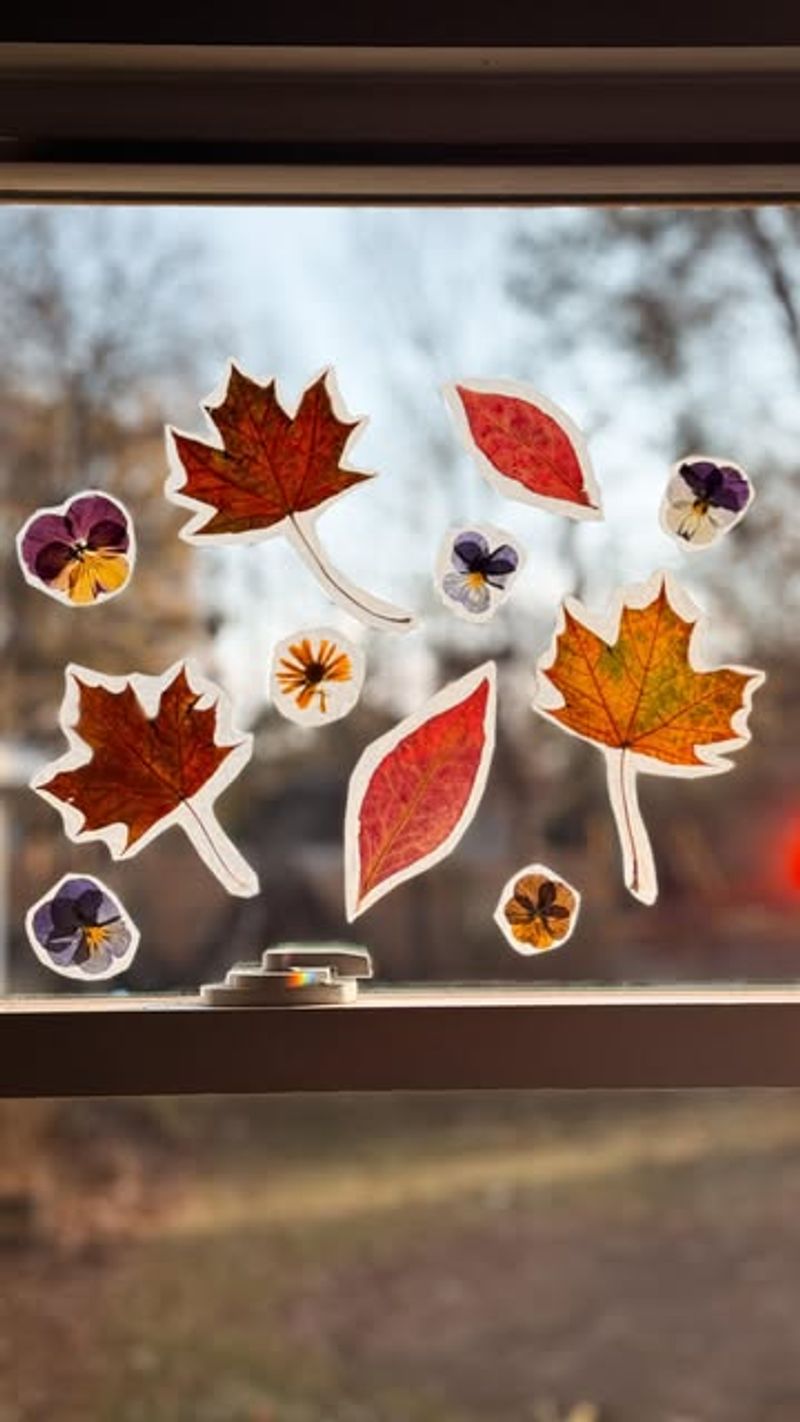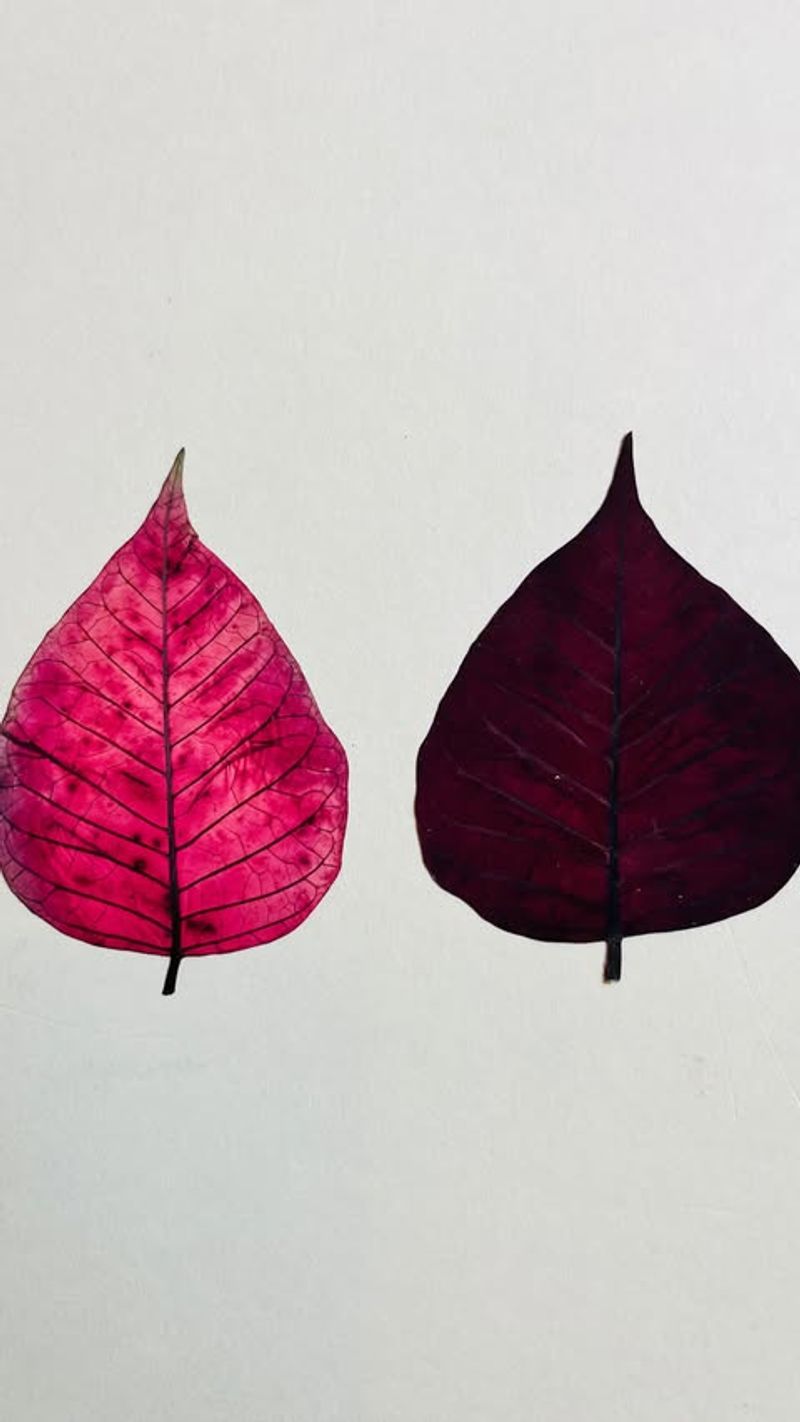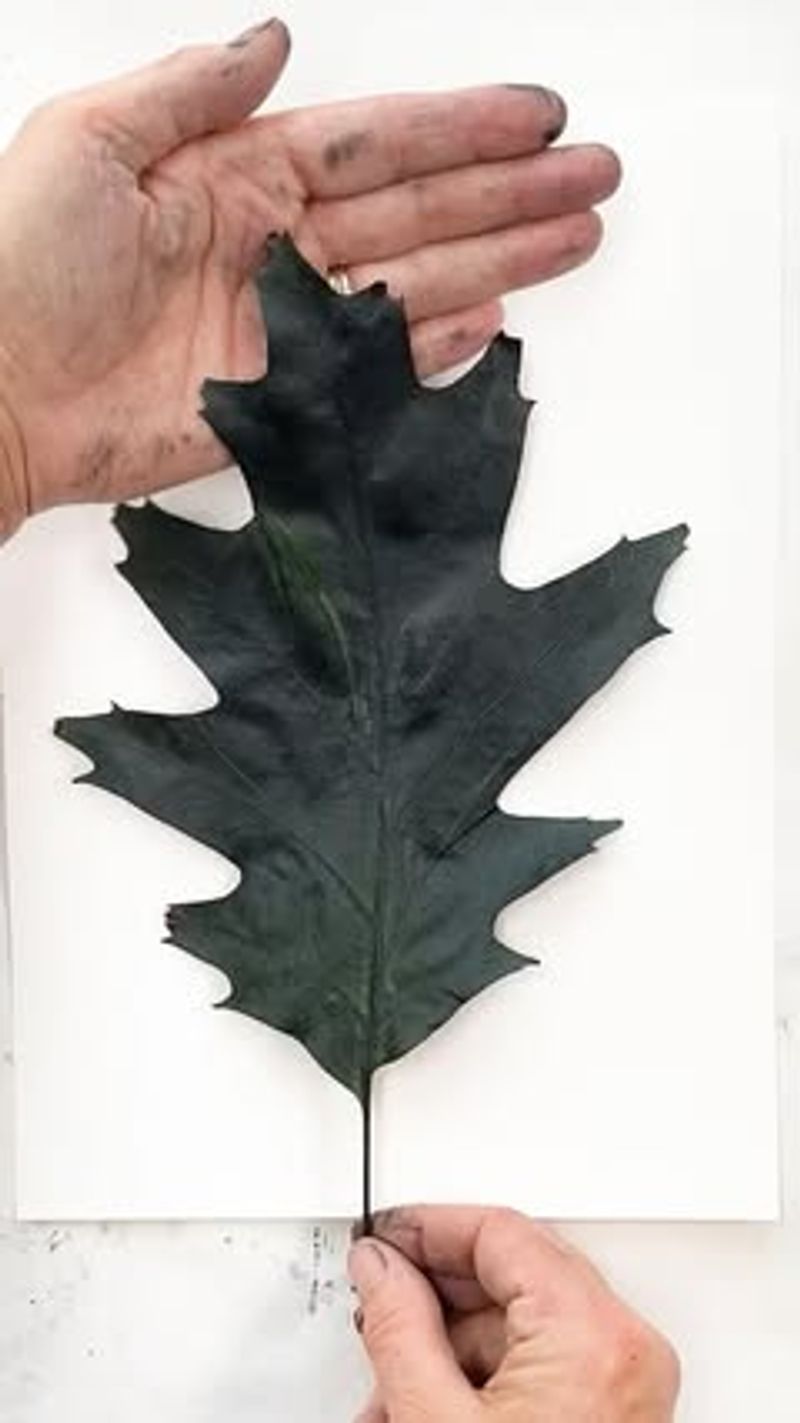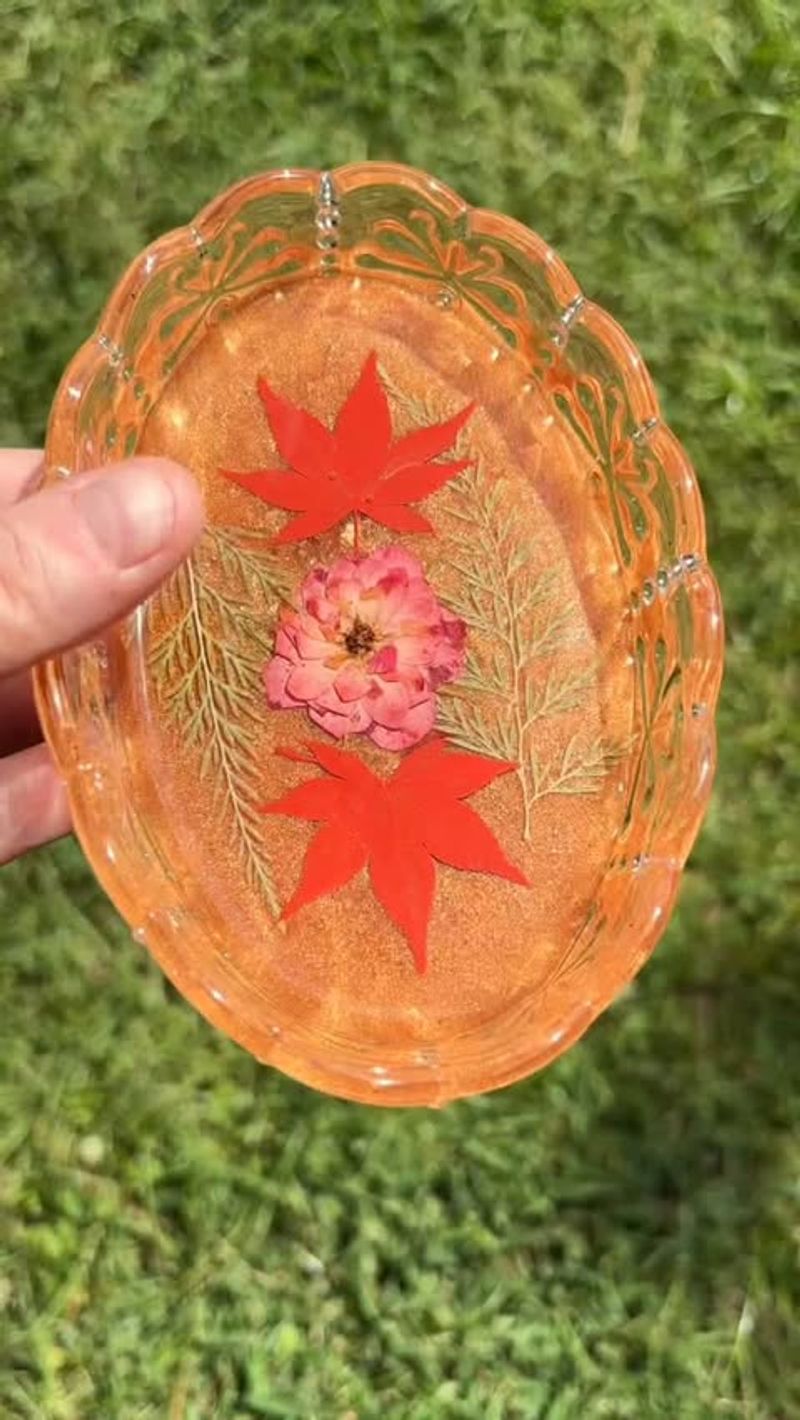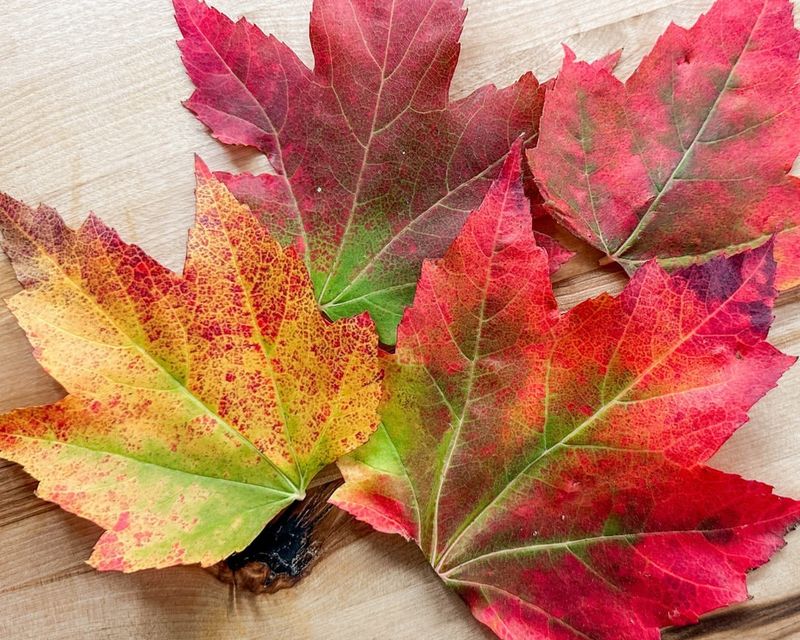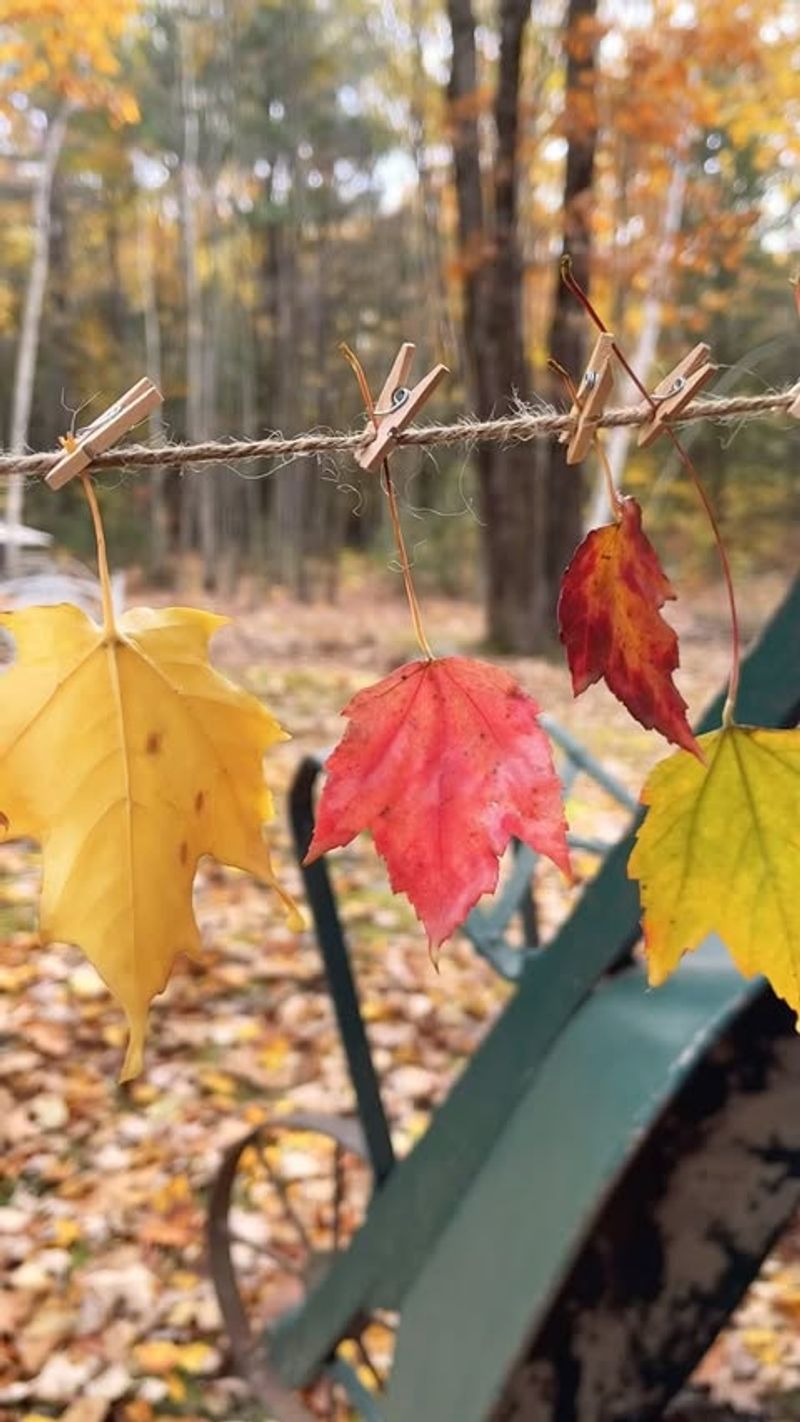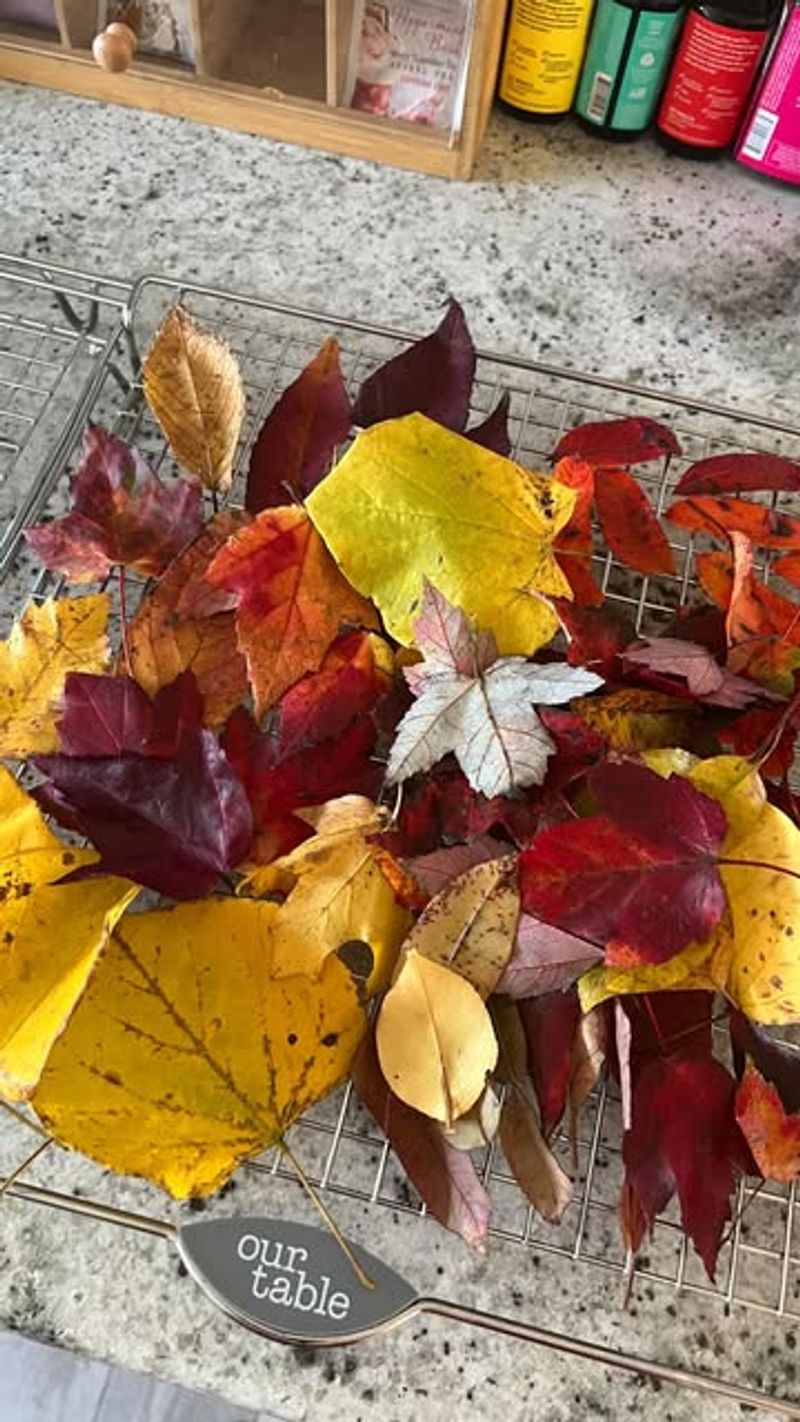Michigan’s fall leaves bring breathtaking color, and keeping that beauty indoors is easier than you think. These 8 simple methods make preserving leaves a fun and creative project.
Each technique helps capture autumn’s charm in a lasting way. Try them and bring a touch of Michigan’s fall magic inside your home.
1. Glycerin Method
Mix one part glycerin with two parts warm water in a shallow dish. Place your Michigan maple or oak leaves in this solution for 3-4 days until they become supple and slightly translucent.
The glycerin replaces the natural moisture in leaves, keeping them flexible rather than brittle. Michigan’s sugar maples respond particularly well to this method, maintaining their vibrant colors longer than other preservation techniques.
2. Wax Paper Pressing
Sandwich freshly fallen leaves between two sheets of wax paper. Run a warm iron over the top, melting the wax to seal and preserve your collection. The heat bonds the wax to the leaf surface.
This old-school technique works wonderfully with Michigan’s abundant oak and aspen leaves. Many Michigan families have passed down this simple preservation method through generations, creating seasonal traditions around leaf collecting.
3. Microwave Book Method
Place Michigan leaves between two paper towels in an old book. Microwave on low power for 30-60 seconds, checking frequently. The microwave rapidly removes moisture while the book keeps leaves flat.
Perfect for Michigan’s delicate birch or beech leaves that might curl otherwise. Hikers exploring Michigan’s Upper Peninsula often collect unique specimens to preserve this way, capturing the region’s distinctive northern forest varieties.
4. Clear Contact Paper
Peel back one side of clear contact paper and arrange your Michigan treasures on the sticky surface. Cover with another sheet, sticky sides together. Trim around the edges with scissors.
This creates instant lamination that’s perfect for Michigan’s vibrant sumac or sassafras leaves. Michigan teachers often use this technique for classroom projects during autumn, helping students create lasting leaf collections from school nature walks.
5. Silica Gel Drying
Cover the bottom of an airtight container with silica gel crystals. Arrange Michigan leaves on top without overlapping, then completely cover with more crystals. Seal for 3-5 days.
This method excels at preserving Michigan’s red maple leaves, maintaining their true colors better than air drying. Michigan craft stores stock silica gel year-round, but demand spikes dramatically each September as preservation season begins.
6. Mod Podge Sealing
Brush a thin layer of Mod Podge over both sides of your Michigan leaves using a foam brush. Allow to dry completely on wax paper. The clear sealer locks in color and adds strength.
Michigan crafters love this method for creating leaf garlands that last through winter. The sealant protects against Michigan’s notorious humidity shifts that can quickly degrade untreated leaves, especially those collected from the state’s lakeshore regions.
7. Glycerine Spray Method
Mix equal parts glycerine and water in a spray bottle. Mist both sides of your Michigan leaves thoroughly. Let dry on newspaper, reapplying daily for 3 days.
This simplified version of the glycerine bath works well for Michigan’s larger leaves like sycamore or catalpa. Michigan botanical gardens recommend this technique for preserving specimen leaves from their collections, especially for educational displays about native tree species.
8. Paraffin Wax Dipping
Melt paraffin wax in a double boiler. Hold Michigan leaves by their stems and dip briefly into the melted wax. Allow excess to drip off before cooling on wax paper.
The wax creates a protective shell that preserves Michigan’s vibrant oak and maple specimens. During Michigan’s peak color weeks in October, rural craft workshops often demonstrate this traditional preservation technique that dates back to Victorian times.

